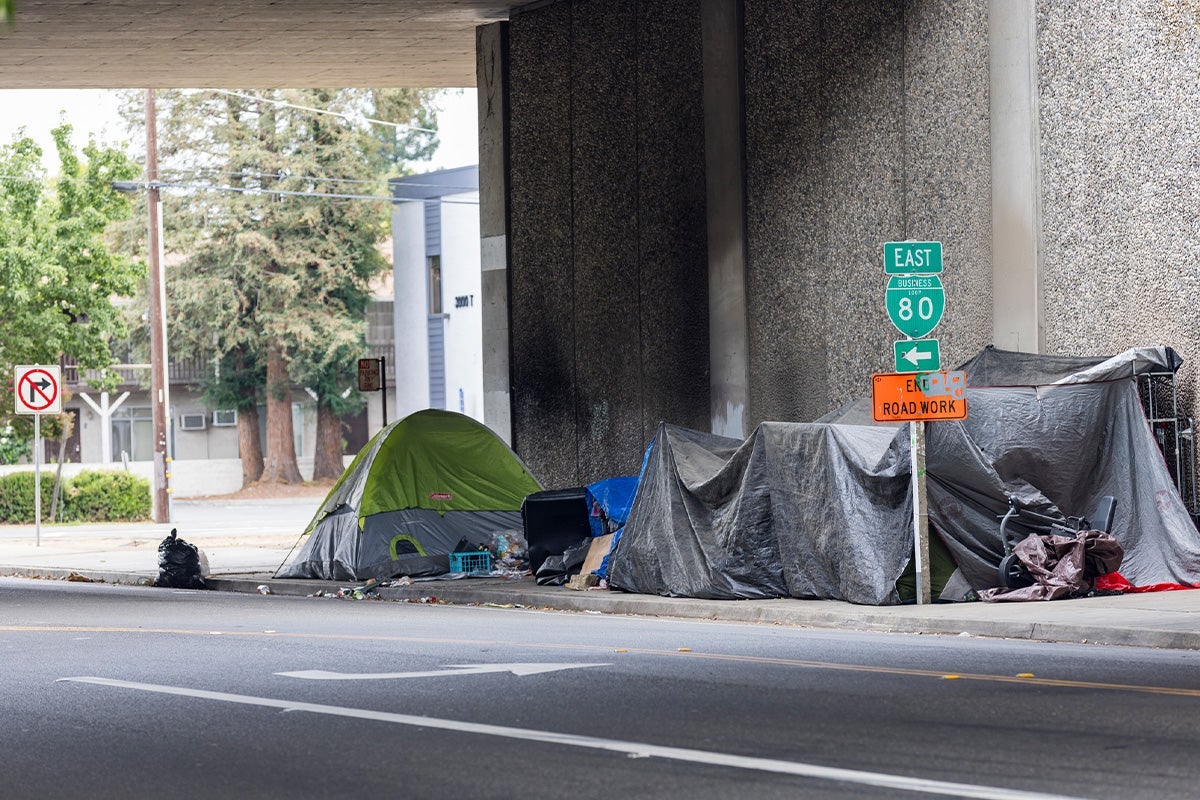Addressing the U.S. homelessness crisis

February 29, 2024 – Between 2022 and 2023, the number of people experiencing homelessness in the U.S. jumped 12 percent—the largest yearly increase since the Department of Housing and Urban Development (HUD) started collecting data in 2007.
“We’re in a crisis right now—let’s make no mistake about that,” said Jeff Olivet, executive director of the U.S. Interagency Council on Homelessness, at February 22 virtual event co-sponsored by Harvard T.H. Chan School of Public Health’s Initiative on Health and Homelessness (IHH). “Housing is a basic human right, just like food or water or a right to education, a right to health care—people need and should have access to affordable housing. And yet, we know we live in a country and in a world where that’s not always the case.”
Other co-sponsors of the event included the Harvard Joint Center on Housing Studies, the Harvard Kennedy School Government Performance Lab, and the Harvard Advanced Leadership Initiative.
Howard Koh, Harvey V. Fineberg Professor of the Practice of Public Health Leadership and IHH faculty chair, served as moderator.
A multi-system failure
The homelessness crisis is driven by challenges across multiple systems, according to Olivet, who discussed key findings from the HUD 2023 Annual Homeless Assessment Report. Not only is there a shortage of affordable housing, but many people also have trouble accessing physical and mental health care, education, and public transportation.
“When you look at all of those factors, it’s no wonder that we have millions of Americans who experience homelessness,” he said.
Olivet noted that during the first couple of years of the COVID-19 pandemic, the federal government instituted eviction moratoriums and provided emergency housing vouchers, but these protections and resources have since ended.
However, Olivet also highlighted a success: With bipartisan support from Congress, the number of veterans experiencing homelessness has decreased by more than 50 percent over the last decade and a half.
“It gives us a proof point that when we invest in housing and wraparound health care, that we know how to end homelessness,” he said. “The question is, how do we apply that to other populations? That’s going to take additional resources.”
Collaborative efforts
In addition to the factors that Olivet mentioned, the number of people experiencing homelessness is increasing due to an influx of immigrants from the Mexico–U.S. border, according to speaker Beth Horwitz, vice president of strategy and innovation at All Chicago Making Homelessness History. The nonprofit coordinates the efforts of organizations across the city, as well as government resources, to serve the different needs of the homeless population.
“We found that when we centralize and coordinate resources, we have the greatest impact,” she said.
Horwitz said that All Chicago expanded its efforts during the pandemic by leveraging resources from the federal government.
She added, “We’re seeing increased investments from state and local government to help us continue to serve even more people, so that we can become a country where housing is a human right, and everyone has access to safe and affordable housing,” she said.
– Jay Lau
Photo: iStock/Brett Wiatre


